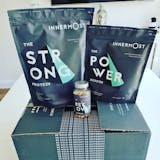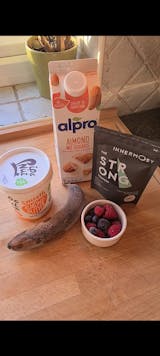If you’ve ever tried to pull yourself over a wall, out of a swimming pool or tried out the monkey bars in your local bar and failed massively, you don’t need us to tell you how hard pull-ups are. They’re one of the toughest bodyweight exercises out there, placing huge demands on your arms, shoulders and back. Your own bodyweight works against you here - the heavier you are, the more weight you’ll need to lift.
However, it’s worth mastering this tricky move. It’s an incredible way to improve your core strength, and as it works out your entire upper body, it’s a relatively simple way to target all those upper body muscles you want to focus on. Even better, pull-ups require nothing other than you and a bar above your head, so it’s easy to practise at home with a pull-up bar or at an outside gym.
This move targets your rhomboids, traps and lats. If you’ve never tried it before, this is our guide to pull-ups for beginners. We’ll walk you through pull-up technique and show you how to master this notorious upper body exercise even if at the moment all you can do is hang limply from the bar, your arms screaming in pain.
Why are pull-ups a great upper body workout?
This exercise is a true test of upper body strength. Plus, it’s one of very few moves that works both your biceps and your back at the same time. If you can get the hang of how to do a pull-up and get a good pull-up technique down, you’ll know that your upper body strength is in tip-top shape. Plus, it’s great for impressing that person you’ve had your eye on at the gym.

Pull-ups for beginners
This is one of those exercises where every rep counts. A good indicator to look at is the Potential Royal Marine Course, a course designed to assess a candidate's suitability for entry into the Royal Marines. To be considered, you have to be able to do three full pull-ups, with 16 reps snagging you the maximum number of points available. Even if you’re not quite at the level of applying to such an elite organisation (or you’re fine in your office job but just want to know you could apply if you wanted to), this is a good baseline to aim for.
A person in good shape should be able to do six slow, controlled pull-ups. Once you’ve mastered that, you can start looking at variations and adding ankle or belt weights to keep yourself challenged.
What if I can’t do any pull-ups?
Firstly, this is a no-judgement zone, and know that this is a hard exercise to master. Concentrate on building up the strength in your arms and shoulder (we have some great exercises for this here and a few more here if you need some inspo). You can also try doing some lat pull-downs and other similar reps to build your endurance.
It’s also crucial to work out your back muscles for this upper body exercise. Exercises such as bodyweight rows and dumbbell rows will help with this. It’s worth noting that your gym may well have a special machine for helping people master the pull up, with a platform you kneel on that raises you up a certain amount depending on what weight you set it to. Resistance bands can also be useful tools here - try placing your foot or knee in one to take some of the pressure off of your upper body.
To begin perfecting your pull-up technique, start by holding yourself in a dead hang as long as possible. Don’t even try to pull yourself up - it’s all about getting used to the movement you’re trying to achieve.
For a version of the exercise perfect for pull-ups for beginners, try ‘eccentric’ pull-ups, where you jump into the top position of the rep and then lower yourself back down as slowly as you can. This isn’t cheating and will help to build up your muscle to master the real thing, so this is a great training exercise.
How to do a pull-up
- Firstly, make sure you're fully warmed up. This helps to prevent injuries, lets you know how hard you can push yourself and prepares your nervous system and muscles to perform in the most optimal way.
- Jump up and firmly grip the pull-up bar with your hands shoulder width apart, and your palms facing away. Hang there with your arms at their fullest extension. If your feet are dragging on the ground, bend your legs at the knee.
- Keeping your core engaged and your shoulder back, slowly pull yourself up to the top of the bar. Keep your mind focused on using all of the muscles available to you in your upper body, as every one of them will help you get to the top.
- You should aim to move yourself upwards until your chin reaches a level above the bar. Once that’s achieved, begin to let yourself slowly move downwards until your arms are straight again.
- Aim for 10 reps - but don’t be surprised if you can’t get there on your first try.
























